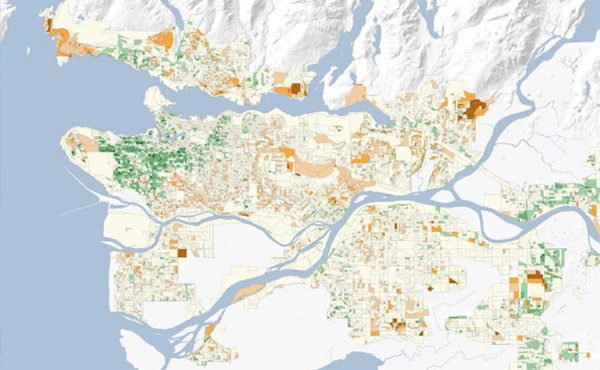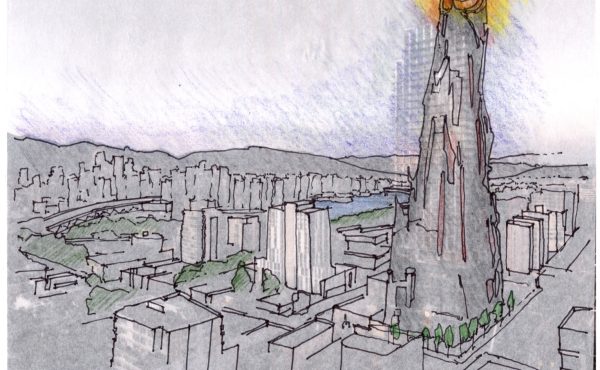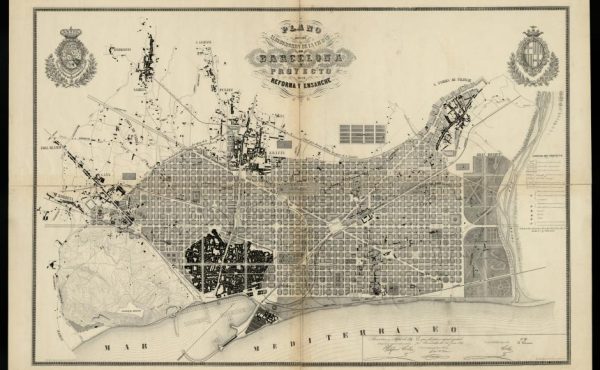 TransitFan has been pondering the question of why the Burrard Bridge lane-reallocation trial has been drawing so much heated debate over the last few weeks. Motorists in particular have been venting a great deal of anger and frustration in the press. As someone who doesn’t drive, I found it difficult to understand why the loss of a single lane on the Burrard Bridge has meant so much, especially when the underutilized eight-lane Granville St. Bridge is only two short blocks away. Is it such big an inconvenience to spend an extra few minutes in one’s car each day? Or are there larger issues at play here?
TransitFan has been pondering the question of why the Burrard Bridge lane-reallocation trial has been drawing so much heated debate over the last few weeks. Motorists in particular have been venting a great deal of anger and frustration in the press. As someone who doesn’t drive, I found it difficult to understand why the loss of a single lane on the Burrard Bridge has meant so much, especially when the underutilized eight-lane Granville St. Bridge is only two short blocks away. Is it such big an inconvenience to spend an extra few minutes in one’s car each day? Or are there larger issues at play here?
The Burrard Bridge is a beautiful piece of work, an Art Deco beauty that serves as an appropriate gateway to False Creek. It was designed at a time when the pedestrian experience was carefully considered – the street lamps that used to light the way over the bridge are sorely missed. Even the view from the bridge was considered, with the railings designed so that they seem to disappear when viewed from a passing automobile. It is a stark contrast to the extremely utilitarian (and notoriously pedestrian unfriendly) Granville Street Bridge, built only 22 years later.
At the moment, half of the people crossing the Burrard Bridge are in single occupancy vehicles. To me this is an astonishing number. A huge number of cars are still pouring into the downtown core every morning, impeding those who are carpooling and taking public transit as well as those who truly need to use vehicles, like firemen, delivery drivers, and postal workers. We need to encourage those who are not hopping into their cars alone every morning: carpoolers, transit riders, cyclists, and pedestrians. If any bridge should be allowed to give up a lane to cyclists, the Burrard Bridge is the obvious choice.
The bridge is a battleground because there are very few, if any, cases in the world of scarce lanes on bridges being taken away from drivers. It is one thing to share a lane with a bicycle; it is quite another to lose it entirely. In Vancouver, we have seen the addition of bike lanes in tandem with traffic calming measures, but few cases of lane reductions. And certainly not on major arterial roads!
I think what we are witnessing is the beginning of a long battle between motorists and those who would like to reclaim road space lost to the automobile over the past 80 or so years. Most drivers feel that roads are for vehicles and they share them only grudgingly. But if we look back just over 100 years we see a time when streets were mixed use, with roadways shared between streetcars, pedestrians, cyclists, and the occasional dog. When gasoline scarcity and high prices irrevocably reduce fossil fuel use, the near exclusive use of roadways by automobiles will be seen for what it is – an aberration of history.
**
John Calimente is the president of Rail Integrated Developments. He supports great mass transit, cycling, walking, transit integrated developments, and non-automobile urban life. Click here to follow TheTransitFan on Twitter.



